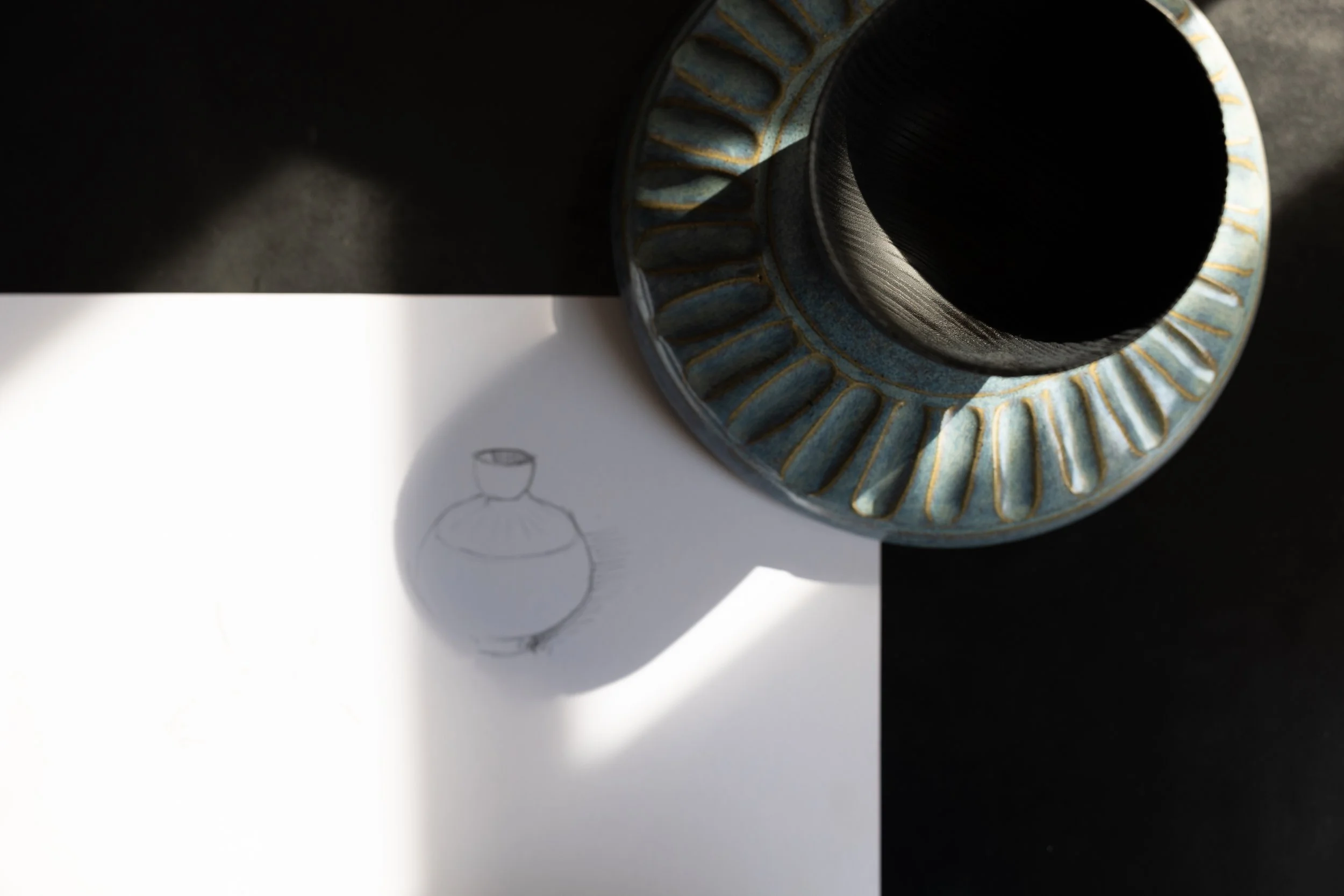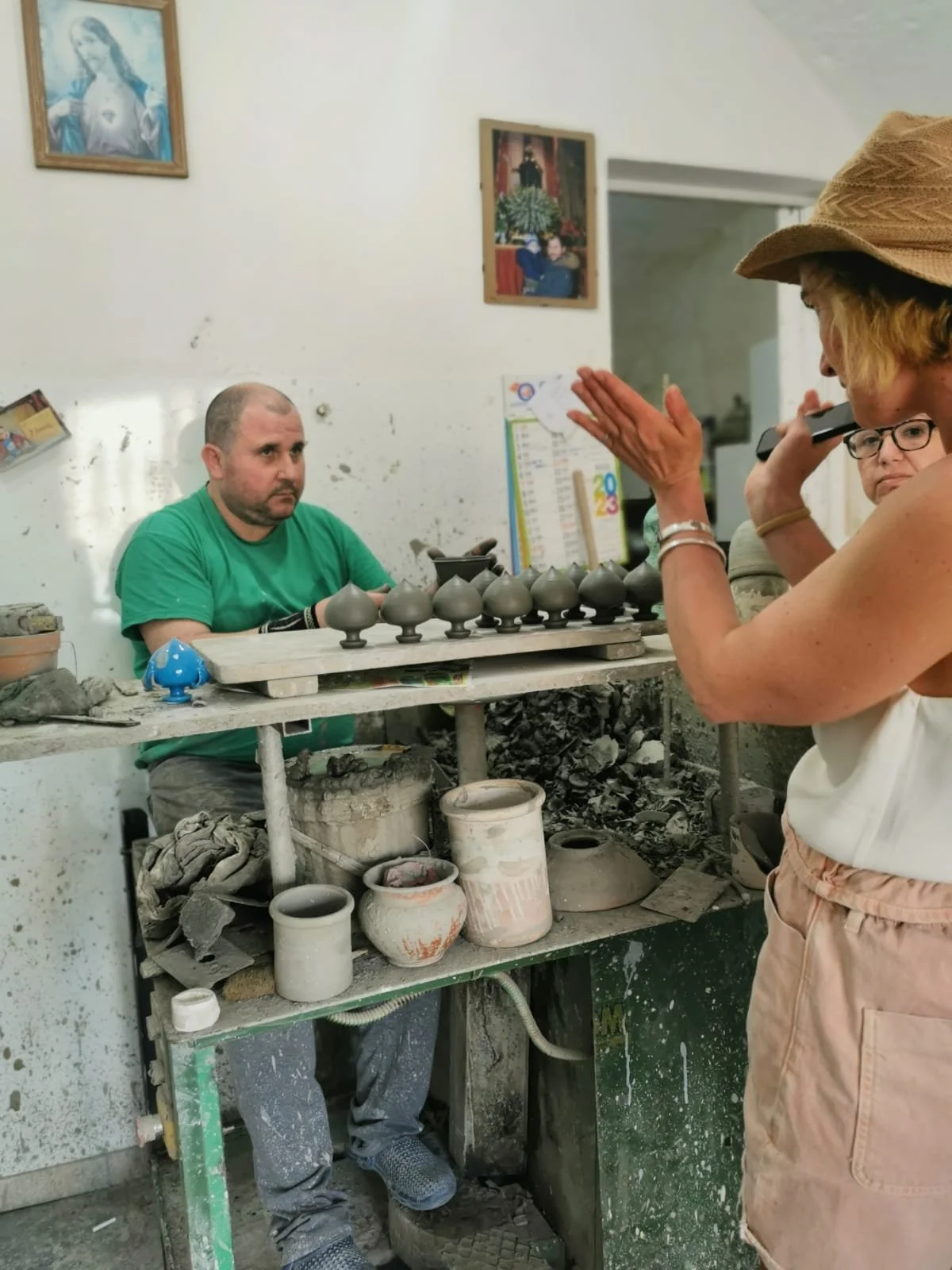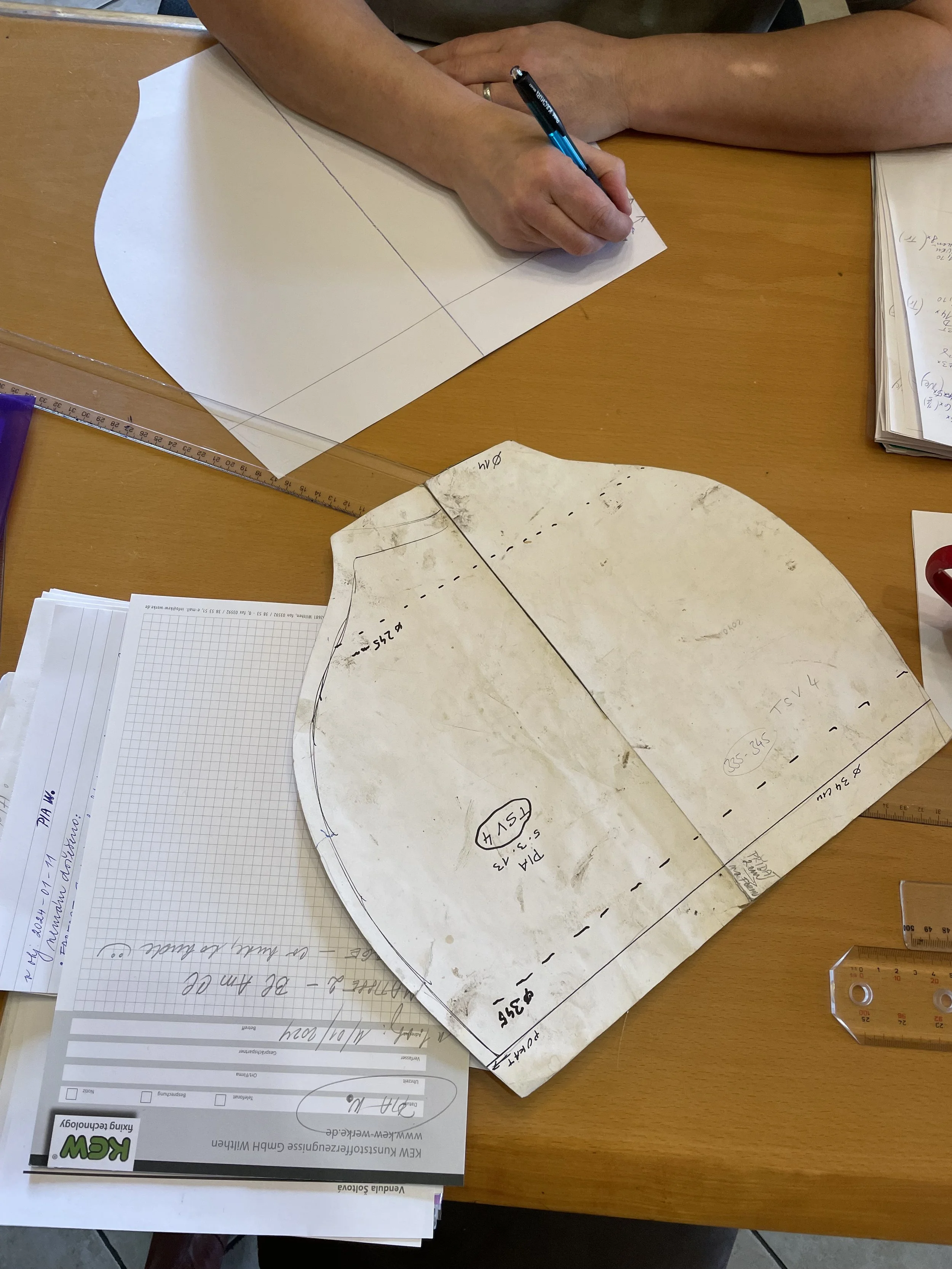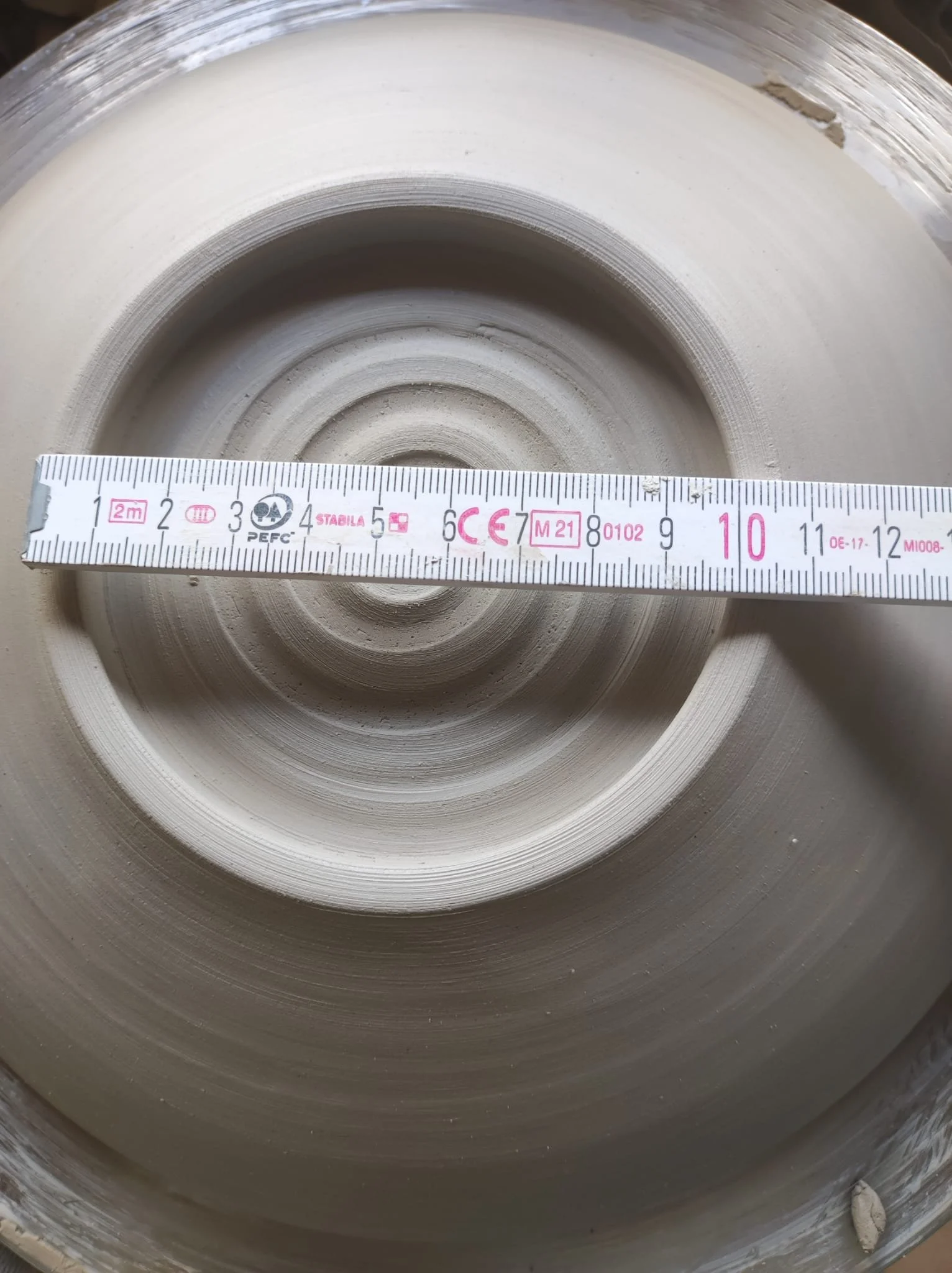Designing Through Dialogue / Learning Craft from the Hands That Know
Kyoto Stacking Vessel
In a world increasingly shaped by automation and replication, working closely with craftsmen has become both a rare privilege and a vital act of preservation. But beyond technique and material knowledge, what we gain most from this collaboration is human connection.
Designing efficiently with any craft medium—be it glass, clay, wood, or metal—requires more than aesthetic sensibility or technical precision. It demands a deep understanding of the craft's character, its limitations, and its hidden strengths. And this knowledge rarely comes from manuals or videos. It lives in people.
Pia discussing shapes in Puglia, Italy
At Utopia Crafts, we’ve learned that the essence of working with traditional materials lies in building interpersonal relationships—with the people who have dedicated their lives to shaping these materials with care and mastery. From the glassblower whose breath determines the thickness of a vessel, to the ceramicist whose hands instinctively know when a glaze is ready—each maker holds a set of intuitive, often unspoken insights that cannot be taught, only experienced.
Paper cut for glass mould
These collaborations start with listening. Sitting beside a woodworker in their studio, watching how they hold a tool, observing the pauses between movements. We ask questions, of course, but more importantly, we let their rhythm guide us. In those quiet exchanges, we learn the unique personality of each craft—how a certain type of clay might shrink unpredictably in firing, or how wood grains behave under smoke staining.
Ceramic on a wheel
Understanding leads to respect. Respect leads to better design.
When we design with knowledge rooted in human connection, the outcomes are not only more functional—they’re also more meaningful. We begin to anticipate the material’s responses, rather than impose our will on it. We co-create, rather than dictate.
This ethos shapes every project we take on, from small-scale pieces to monumental works like Scarabee. We don’t simply design for materials—we design with them. And that process begins with honoring the people who know them best.
Over the years, this way of working has broadened our palette—from sculpted and mold-blown glass sourced in neighboring European countries to a variety of clays, stains, patinas, and smoked woods. But more than expanding our material range, it has expanded our understanding of the invisible thread that connects us all: craft as a shared language.




